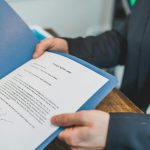Why Mortgage Loan Fraud Audits Are Essential for Lender Protection and Risk Management
Introduction:
Mortgage loan fraud is a significant risk in the modern financial landscape. With the increasing complexity of the mortgage process, fraudulent activities have become more sophisticated, making it essential for lenders to employ effective fraud detection and prevention measures. One of the most crucial tools in this effort is mortgage loan fraud audits. These audits help to ensure that loan applications and associated documentation are legitimate, reducing the risk of financial losses and regulatory violations.
The importance of mortgage loan fraud audits cannot be overstated. Fraudulent loans can result in severe financial damage, legal consequences, and long-term reputational harm for lenders. The key to minimizing these risks is early detection, and mortgage fraud audits are designed to identify discrepancies, misrepresentations, and other signs of fraud before they can cause significant damage.
In this blog, we will explore what mortgage loan fraud audits entail, the common types of mortgage fraud they help uncover, the audit process itself, and why these audits are critical for safeguarding the interests of lenders, borrowers, and the financial system as a whole. By understanding the significance of mortgage fraud audits, financial institutions can better protect themselves against fraud and maintain the integrity of their lending practices. Whether you’re a lender looking to strengthen your fraud prevention efforts or a borrower interested in understanding how the process works, this guide will provide valuable insights into the world of mortgage loan fraud audits.
What Are Mortgage Loan Fraud Audits?
A mortgage loan fraud audit is a comprehensive review of a loan application and related documents to identify signs of fraud or non-compliance with regulations. These audits are conducted by trained professionals, such as forensic accountants, mortgage compliance experts, and fraud investigators, who specialize in identifying fraudulent activity and ensuring the integrity of mortgage lending.
The main purpose of a mortgage loan fraud audit is to uncover discrepancies, inconsistencies, or fraudulent representations within the loan documentation. Auditors will scrutinize a variety of documents, including the loan application, credit reports, income statements, bank statements, property appraisals, and other relevant paperwork. By identifying irregularities, auditors help to prevent fraudulent loans from being approved, reducing the risk of financial losses for lenders and protecting the overall stability of the mortgage market.
Fraud audits are often performed at different stages of the mortgage process, including during the loan origination phase, after closing, and even after a loan has been defaulted or foreclosed upon. Regardless of when the audit takes place, the goal remains the same: to ensure that the loan is legitimate, that the borrower can afford the loan, and that the loan documentation accurately reflects the terms and conditions of the agreement.
Common Types of Mortgage Loan Fraud
Mortgage fraud comes in various forms, and understanding these different types is crucial for auditors and lenders. Here are some of the most common types of mortgage fraud that can be uncovered through a mortgage loan fraud audit:
- Income Misrepresentation:One of the most prevalent forms of mortgage fraud is when a borrower inflates their income to qualify for a larger loan. This could involve providing falsified pay stubs, tax returns, or bank statements to make the borrower appear more financially stable than they are. Income misrepresentation allows borrowers to secure loans they may not be able to repay, placing the lender at risk.
- Appraisal Fraud:In appraisal fraud, the property value is intentionally inflated to match the loan amount. This type of fraud is often committed by appraisers, real estate agents, or borrowers who may collude to overstate the value of the property. By inflating the property’s value, fraudsters can secure a loan that exceeds the property’s actual worth, increasing the risk of loan default and foreclosure.
- Straw Buyer Fraud:In straw buyer fraud, an individual with a clean credit history (the “straw buyer”) applies for a mortgage on behalf of someone else who is unable to qualify for a loan. The borrower may have poor credit or an unstable financial situation but uses the straw buyer to secure a loan. The fraudster may then default on the loan, leaving the lender with a significant financial loss.
- Occupancy Fraud:Borrowers may misrepresent the intended use of a property to secure a better mortgage rate. For example, a borrower may claim that the property will be their primary residence to qualify for a lower interest rate, even though they plan to rent out the property or use it as a second home. This type of fraud is particularly common in investment property loans, where lenders typically impose higher interest rates due to the added risk.
- Identity Theft:Identity theft in the mortgage industry occurs when a fraudster uses stolen personal information to apply for a mortgage loan. In these cases, the individual whose identity was stolen is often unaware that their information is being used for fraudulent purposes. This type of fraud is especially difficult to detect, as the borrower may not even be aware that the fraud has occurred until the mortgage defaults.
- Falsified Documents:One of the most common methods of committing mortgage fraud is through the submission of falsified documents. Fraudsters may forge bank statements, pay stubs, tax returns, or other financial documents to make the borrower appear more qualified for a loan. By using fraudulent documents, borrowers can obtain loans they would not otherwise qualify for, creating significant risks for lenders.
How Mortgage Loan Fraud Audits Work
Mortgage loan fraud audits involve a systematic review of all loan-related documentation to identify potential fraud. The process is typically carried out by a team of forensic auditors or mortgage fraud experts who have experience in identifying fraudulent activity. Here’s how a typical mortgage loan fraud audit works:
- Gathering Documents:The first step in a mortgage fraud audit is to gather all the relevant documentation associated with the loan. This includes the loan application, income verification documents (such as pay stubs and tax returns), credit reports, property appraisals, title reports, and insurance documents. The auditors will also review the borrower’s creditworthiness and financial history.
- Verifying Information:Once the documents have been collected, the auditors will verify the information provided by the borrower. This may involve contacting employers to confirm income, cross-checking bank statements with the borrower’s account records, and verifying the accuracy of the property appraisal. The goal is to ensure that all information provided is truthful and accurate.
- Identifying Red Flags:The next step is to look for red flags that may indicate fraud. These can include inconsistencies in the documentation, such as mismatched income figures, discrepancies between the loan application and supporting documents, or inflated property values. Other red flags might include irregularities in the borrower’s employment history or unexplained changes in their financial situation.
- Investigating Potential Fraud:If any red flags are identified, the auditors will investigate further. This may involve contacting third parties, such as appraisers, real estate agents, or employers, to verify the accuracy of the information. The auditors will also review any previous loans the borrower has applied for to determine if there is a pattern of fraudulent behavior.
- Generating a Fraud Report:Once the audit is complete, the auditors will generate a detailed fraud report outlining their findings. The report will include a summary of the loan documentation, any discrepancies or red flags discovered during the audit, and a conclusion regarding the likelihood of fraud. The report may also include recommendations for further action, such as denying the loan or reporting the fraud to authorities.
- Fraud Prevention Recommendations:In addition to identifying specific fraud cases, mortgage loan fraud audits often include recommendations for improving fraud prevention measures. This can involve strengthening the verification process, adopting advanced fraud detection software, or implementing new procedures to reduce the likelihood of fraud in the future.
The Importance of Mortgage Loan Fraud Audits
Mortgage loan fraud audits are essential for several reasons. Here are some of the key benefits:
- Risk Reduction:The most significant benefit of a mortgage loan fraud audit is the reduction in financial risk. By identifying fraudulent loans before they are approved, lenders can avoid the significant losses that result from defaults and foreclosures.
- Ensuring Regulatory Compliance:Mortgage lenders are subject to strict regulatory requirements, and non-compliance can result in hefty fines, penalties, and legal consequences. Mortgage loan fraud audits help ensure that lenders meet these regulatory standards and avoid legal issues.
- Protecting Reputation:Fraudulent loans can damage a lender’s reputation, leading to lost business and decreased trust among clients and investors. Mortgage fraud audits help protect the lender’s reputation by ensuring that only legitimate loans are approved.
- Improving Loan Portfolio Quality:By identifying and eliminating fraudulent loans, mortgage loan fraud audits contribute to the overall quality of the lender’s loan portfolio. This improves the lender’s financial stability and reduces the likelihood of defaults.
- Operational Improvements:Mortgage fraud audits provide valuable insights into the lender’s internal processes. By identifying weaknesses or vulnerabilities in the loan approval process, lenders can implement changes to prevent fraud in the future.
Conclusion:
Mortgage loan fraud poses a significant threat to financial institutions, borrowers, and the broader economy. However, mortgage loan fraud audits offer an effective solution for detecting and preventing fraudulent activities. These audits are essential for ensuring that mortgage loans are legitimate, reducing financial risks, and maintaining regulatory compliance.
By identifying fraudulent activity early in the loan process, mortgage loan fraud audits help protect lenders from financial losses and preserve the integrity of the mortgage lending system. Additionally, these audits provide valuable insights into potential operational improvements, allowing lenders to strengthen their fraud prevention measures.
If you’re a lender looking to safeguard your business against mortgage fraud, conducting regular fraud audits is essential. For borrowers, understanding the role of fraud audits helps ensure that only legitimate loans are approved, minimizing the risk of being taken advantage of.
Contact us today at (877)-399-2995 or visit Mortgage Audits Online to learn more. Secure your financial future with confidence!




